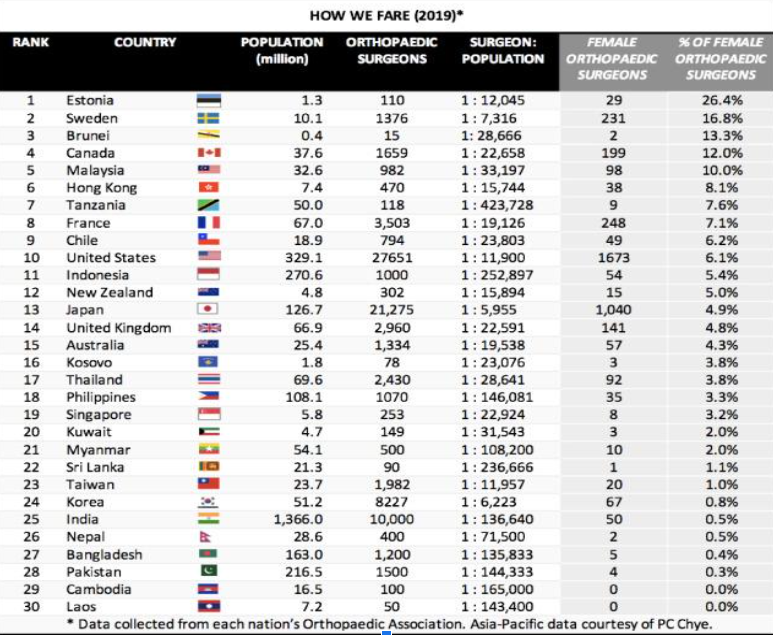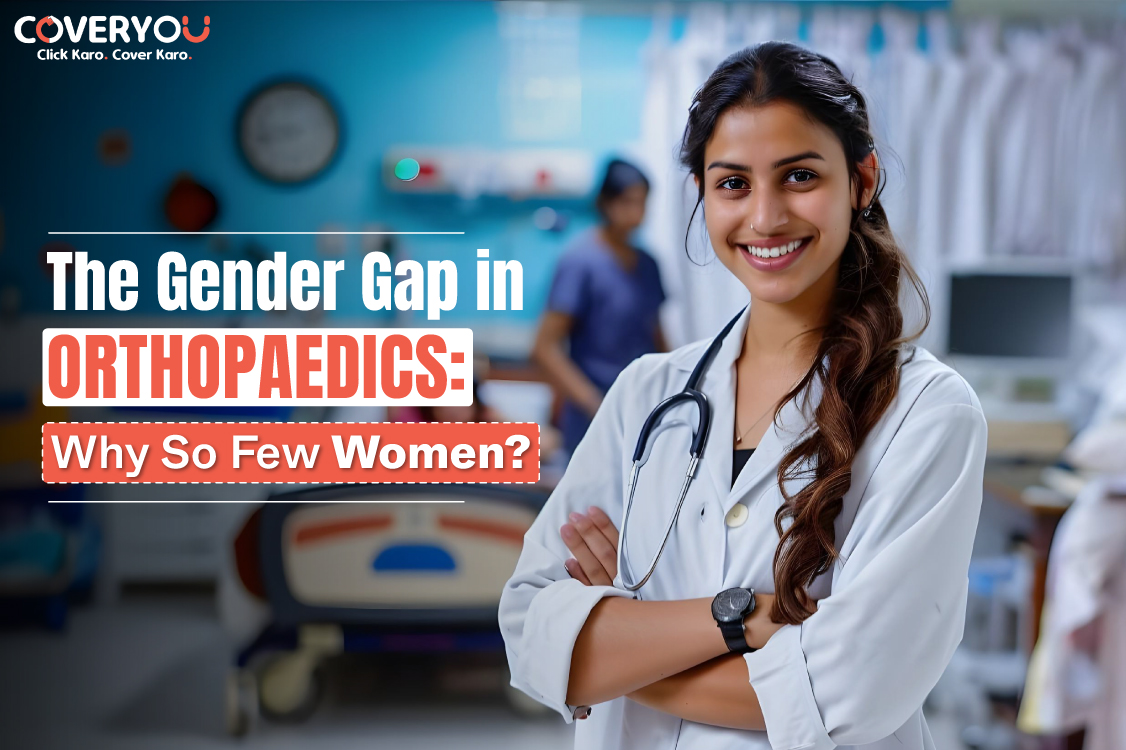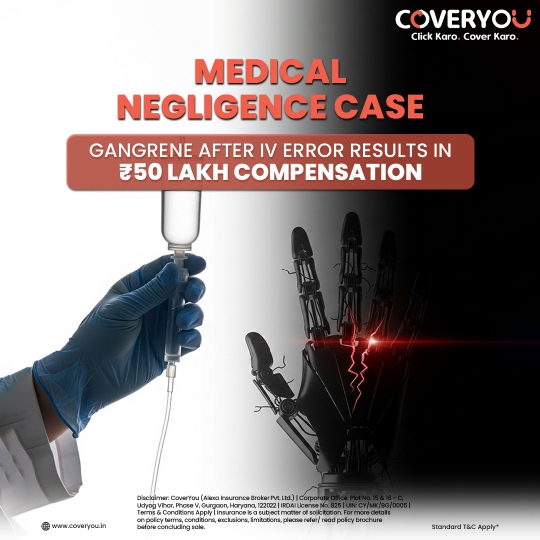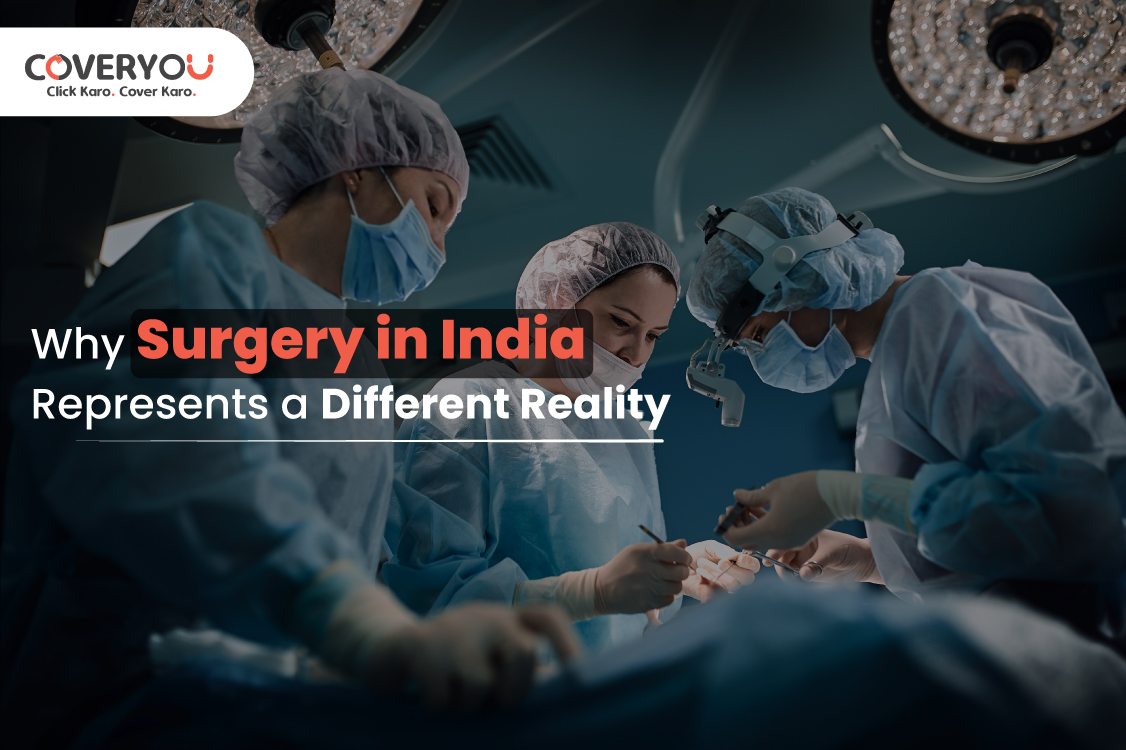The gender gap in orthopaedics: why so few women? In a world where women currently represent more than 55% of medical school graduates, the question isn’t only perplexing; it’s revealing. Orthopaedics, one of the most vital and cutting-edge disciplines of surgery, remains a bastion of masculinity. But the gender imbalance isn’t because of inadequate talent, interest, or drive. It’s because of the systems that deter women even before they start.
While the ratio of women in medicine school and other male-dominated surgical fields, apart from orthopaedics, is gradually increasing, this increase is not reflected in orthopaedics, in which the number of women lags at only 4% in the US and less than 1% in India.

A Specialty That Still Feels Off-Limits
Orthopaedic surgery is one of the few specialities where gender imbalance isn’t just occurring; it’s massive. As women enter medicine in record numbers, orthopaedics is lagging in a decades-old stereotype where brains are not as important as biceps. It’s not rare for women to be subtly or sometimes blatantly discouraged from pursuing this speciality in their early years of training.
The Invisible Barriers
A woman who is becoming an orthopaedist doesn’t encounter merely one obstacle; she faces many, often stacked from the very start of her career. A recent study applying the Gender Bias Scale revealed six recurring patterns of challenge that women report in this speciality:
- Drowned Out: Women typically have difficulty being heard, particularly in operating rooms or in academic debates.
- Double Standards: They’re held to greater standards of excellence, and errors cost them more.
- Male-dominated Culture: The old boys’ club still exists within surgical departments.
- No Mentorship: Since there are so few older women in orthopaedics, it’s hard to find mentors.
- Harassment: subtle or open, it’s an event many women experience regularly.
- Work-Life Inflexibility: Long hours and rigid schedules usually don’t leave time for family or personal life.
These aren’t grievances; they’re patterns. And if these patterns aren’t dealt with, orthopaedics will keep on missing out on phenomenal talent.
The Impact of Exclusion
When diversity is absent, the burden is shared across the entire healthcare system. Studies have consistently shown that diverse teams perform better, innovate faster, and provide more empathetic care. Women bring new ideas, teamwork-orientated mindsets, and a strong commitment to patient-focused care. Ignoring half the talent pool only weakens the foundation of orthopaedic practice.
What Needs to Change
The real transformation won’t happen from mantras. It will happen through bold shifts in culture, education, and leadership. This is where to start:
- Hire with Purpose: Residency programs need to admit and correct their own biases.
- Women mentoring women: Older surgeons need to actively mentor and sponsor the next generation.
- Men Allying: Things move quicker when men support women, not vie for their positions.
- Family-Friendly Policies: Childcare assistance, maternity leave, and flexible work schedules aren’t perks; they’re requirements.
- More Women in Power: From conference podiums to hospital boards, representation needs to be seen and sustained.
Reimagining the Field
It is time we ceased enquiring as to whether women “can” succeed in orthopaedics. They already are when offered the opportunity. What we should be asking is: What type of career do we wish orthopaedics to be? One that hangs on to bygone hierarchies? Or one that adapts to the future of medicine?
Let’s make it a profession where talent, not sex, determines achievement. Where mentorship, opportunity, and respect are not just catchphrases but day-to-day realities.
Let’s Build the Future Together
Why are so few women in orthopaedics? Because the system wasn’t designed for them. But that doesn’t mean it can’t be redesigned with fairness, compassion, and excellence at its heart. Let’s shatter the old bones of bias. And build something better. “Women In Orthopedics”
Source:
https://pmc.ncbi.nlm.nih.gov/articles/PMC10050455/#:~:text=Discussion,%25%20in%20India%20%5B3%5D.
https://www.sciencedirect.com/science/article/pii/S2059775424000956
https://pmc.ncbi.nlm.nih.gov/articles/PMC10471437/

















